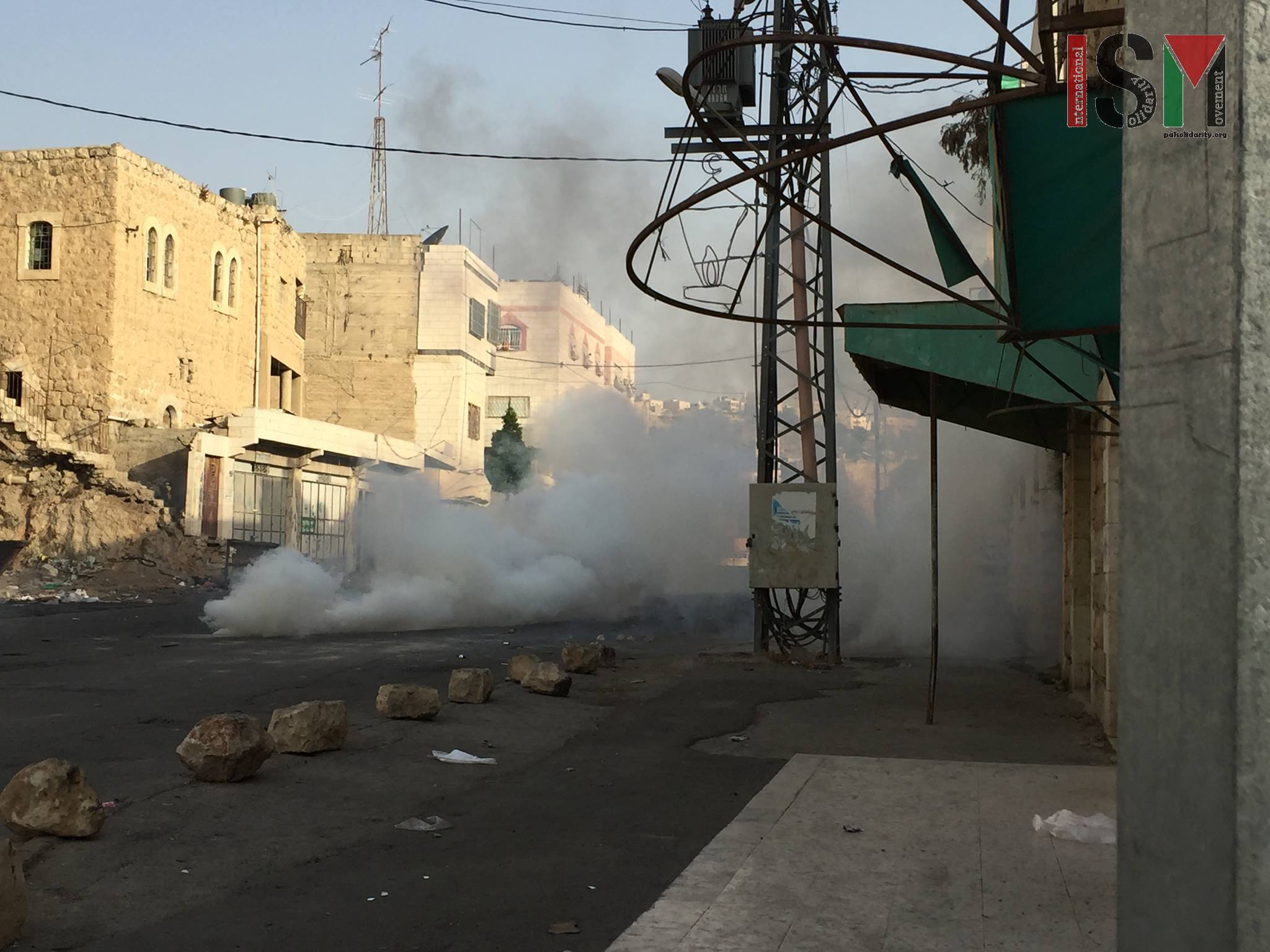Tag: Children
-
Escalating tear-gas deployment against school children in Hebron
Monday morning, October 12th, 2015 Israeli forces pummeled Palestinian children going to school near Salimeh & Queitun checkpoints in Hebron with a total of 19 rounds of tear-gas and one stun grenade fired. The onslaught began at 7:41 am when a crowd of children could be heard playing noisily in the street near several primary…
-
VIDEO: Children assaulted and 3 women arrested at Nabi Saleh demonstration
21st March 2015 | International Solidarity Movement, Ramallah Team | Nabi Saleh, Occupied Palestine Israeli forces arrested three women in Nabi Saleh and injured several protesters, one with live ammunition, during the village’s weekly Friday protest on March 13. The demonstration was met with the usual military violence as Israeli forces threw stun grenades and fired live ammunition at unarmed and peaceful protesters. After…
-
Dancing children attacked by Israeli forces
25th February 2015 | International Solidarity Movement, Khalil Team | Hebron, Occupied Palestine On the 24th of February in occupied Al-Khalil (Hebron), Israeli forces opened fire on dancing Palestinian youth, firing tear gas and throwing stun grenades at group of young children performing a traditional Palestinian dance as a form of protest in front of Shuhada checkpoint. The fifteen…



